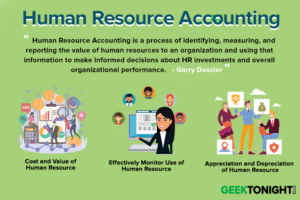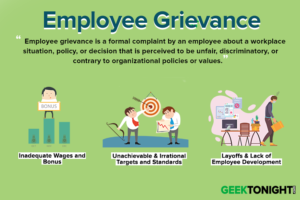What is Organizational Culture?
Organisational culture can be defined as the sum of the values, norms and beliefs that are reflected in the behaviour, attitudes and values shared by employees. It helps in developing a working environment in an organisation by forming the basis for interaction between all the elements of the organisation, such as employees, departments, processes and functions.
The culture of an organisation instils a feeling of respect among its employees based on organisation’s values, success stories, vision, mission and goals. Thus, culture plays a prominent role in building the organisation’s image among its employees, stakeholders and competitors.
Moreover, culture helps management in defining organisational policies, practices, rules and regulations. All these are integral elements that contribute to the overall employee satisfaction and productivity of the organisation.
Table of Content
- 1 What is Organizational Culture?
- 2 Organizational Culture Definition
- 3 Characteristics of Organizational Culture
- 4 Importance of Organisational Culture
- 5 Types of Organizational Culture
- 6 Types of Organizational Values
- 7 Impact of Organisational Culture on Performance and Satisfaction
- 8 Role of Leaders in Changing Organisational Culture
- 9 Successful Organisational Culture
- 10 Myths About Organisational Culture
Leaders in organisations need to have sound knowledge of organisational culture in order to adapt to the changes that take place in the business environment.
For this, organisations can make use of various cultural models, such as Edgar Schein’s cultural model and Hofstede’s cultural model. In this chapter, you will learn about the concept of organisational culture in detail.
Organizational Culture Definition
The culture of an organization represents common perceptions shared by its employees. In other words, organizational culture can be defined as the pattern of shared values, beliefs, assumptions, and working habits of people within an organization.
According to Gareth Morgan, organizational culture is defined as the set of beliefs, values, and norms, together with symbols like dramatized events and personalities that represent the unique character of an organization, and provide the context for action in it and by it.
In the words of Edgar Schein, organizational culture is a pattern of shared basic assumptions that the group learned as it solved its problems that have worked well enough to be considered valid and is passed on to new members as the correct way to perceive, think, and feel in relation to those problems.
Organizational culture generally evolves from the vision and actions of a leader, influential individuals in organizations, work ethics, organizational policies, etc. It is reflected in the values adopted by the organization’s management, approaches to people management, and relationships with shareholders, the government, society, customers, etc. A proper understanding of culture enables employees to improve organizational performance by solving problems quickly.
The attitude of people plays an important role in the formation of organizational culture. This can be illustrated with the help of an example. IBM registered huge losses of around US $8.10 billion in 1993, which was more than any company had ever lost in the U.S. history, due to the wrong attitude of the management.
The company was operating under the misconception that customers needed the company more than they needed the company. It was Lou Gerstner, the former Chief Executive Officer (CEO) of IBM, who reversed this attitude and helped to develop a more customer-centric culture in the company. Apart from customers, an organization also needs to focus on the environment (internal and external) as well as its core values and beliefs.
Characteristics of Organizational Culture
The main characteristics of organizational culture are discussed as follows:
- Innovation
- Attention to Detail
- Emphasis on Outcome (Achievement Orientation)
- Emphasis on People
- Teamwork (Collaboration Orientation)
- Aggressiveness or Competitive Orientation
- Stability (Rule Orientation)
Innovation
This refers to the degree to which the members of an organization are encouraged and motivated to take risks and be innovative. Employees in organizations with innovative cultures enjoy a certain degree of freedom, responsibility, and independence.
This further encourages employees to take risks and try new ways to accomplish the goals of the organization. For example, 3M is known for its innovative culture. In the absence of innovation, employees are forced to follow a monotonous procedure.
Moreover, they are hesitant in sharing new ideas and feel safe in following established procedures to complete their tasks. Therefore, an effective organizational culture must build a supportive environment that encourages employees to share their new ideas with the management.
Attention to Detail
This refers to the extent to which employees are expected to display precision, accuracy, and attention to minute details. By focussing on small details, employees are able to do their tasks thoroughly and with complete professionalism.
Emphasis on Outcome (Achievement Orientation)
This refers to the degree of focus that the top managers and leaders lay on the final results or outcomes rather than on the various techniques and processes used to attain those results.
For instance, a company that instructs its sales managers and allocates sales targets places a high value on meeting targets. Thus, in such organizations, the culture focuses on being result oriented.
Emphasis on People
This refers to the degree of importance an organization places on its employees and their development. The culture of an organization must always promote values of respect and integrity.
Therefore, organizations must create a work environment where employees are empathetic towards each other and work in harmony. Moreover, the management must provide clear communication and assistance to support employees. South West Airlines is the perfect example as it is people-oriented.
Teamwork (Collaboration Orientation)
It is the degree to which organizations arrange job activities around teams rather than individuals. Organizations must develop a positive and collaborative work environment to encourage employees to work as a team.
This helps an organization in unifying its employees and increases their commitment to their work and the company.
Aggressiveness or Competitive Orientation
It is the degree to which employees are decisive and competitive. Companies with very aggressive cultures encourage their employees to outperform the competition at all costs. For example, Microsoft’s culture is renowned for being aggressive.
Stability (Rule Orientation)
It is the degree to which an organization places importance on maintaining the status quo. In every organization, there are rules and procedures that are necessary to be followed to avoid confusion related to work, reporting, and other issues.
Therefore, organizational culture must place high importance on being rule-oriented, and predictable. This helps organisations to be stable and perform effectively in the long run.
Importance of Organisational Culture
Organizational culture has been identified as the most important building block for any successful organization in creating a desirable workplace.
The following points discuss the importance of organizational culture:
- Organizational culture promotes healthy competition in the workplace. Employees always seek recognition and appreciation from their senior leaders by putting in their best efforts to perform better than their co-workers. The corporate culture encourages employees to be motivated at all times to perform well.
- It helps in creating the brand image of the organization and gives a distinct identity to it. For example, companies like Google, Facebook, and Southwest Airlines are known for their innovative culture.
- Organisational culture helps in bringing each employee at par with each other on a common platform by providing opportunities for their development.
- Organizational culture helps in uniting employees from varied backgrounds, nationalities, religions, and castes. There are many organizations that emphasize a culture in which employees at all levels across all designations have to enter the office on time.
Such a corporate culture encourages all members to be punctual and respect time, which proves beneficial for the company in the long run. - A well-defined culture helps in the implementation of policies and procedures in an organisation.
Types of Organizational Culture
Though organizational culture represents those perceptions that are common and shared by all the members of an organization, in reality, an organization may have more than one culture existing on the premises. Due to differences in the personal characteristics of individuals and various sub-groups, it can be concluded that organizations do not have a uniform culture.
Most organizations have two cultures existing at the same time: a dominant culture and a sub-culture.
Dominant Culture
A dominant culture represents core values that are shared and followed by a majority of the members of an organisation. The dominant culture provides a macro view of organizational cultures that gives a distinct identity to the organization.
For example, if an employee is discussing his/her organizational culture with his/her colleague, he/she is referring to the dominant culture. The dominant culture is mainly observed in the following types of organizations:
Bureaucratic Organisations
Organizations that are bureaucratic and well-structured exercise extensive control over their employees. Employees in these organizations are supposed to work according to standard procedures and guidelines and strictly adhere to the hierarchy. The roles and responsibilities of each employee are clearly defined in such organizations.
Competitive Organisations
Organisations operating in a competitive environment where the focus is on attaining sales targets follow a competitive culture. In such organisations, employees are required to maintain strong relationships with both customers and suppliers.
Collaborative Organisations
Organisations that adopt a collaborative culture follow a decentralised structure. In these organisations, employees from various departments work together to find
solutions to business problems and issues.
Subculture
Subcultures refer to mini cultures existing within an organisation established by employees working in various departments and divisions. They tend to develop in large organisations and reflect shared problems, situations or experiences faced by the members of these subcultures.
A subculture includes both core values of the dominant culture and additional values that are unique to employees following it. For instance, the marketing department can have its own subculture where people share the same values and assumptions.
Likewise, an office unit separated from the main company headquarters may have a distinct culture of its own while retaining some of the core values of the dominant culture. Mergers of two organisations having different cultures can also give rise to the formation of subcultures in the merged entity.
Subcultures also exist due to the absence of a dominant culture, which makes it difficult for the organization to establish an identity in the market place. This further creates difficulty in providing a uniform interpretation of appropriate and inappropriate behavior in an organization.
Types of Organizational Values
The meaning of values is different for different people. Values are attitudes that define the importance an individual gives to people and concepts. For example, being honest might be important for someone, while for another being wealthy might be more important than just being honest. Thus, values determine our selection between various alternatives. They form the basis of how individuals see themselves, how they see others and how they interpret the world in general.
Let us discuss these two types of types of organizational Values
Instrumental Values
These are the core values that are permanent in nature. They comprise personal characteristics and character traits of people. They are the preferred modes of behavior and are inclusive of both positive and negative values and traits, for example, honesty, sincerity, competitiveness, obedience, intelligence, aggressiveness, conservativeness, etc.
Instrumental values are also present in organizations and can be determined by the type of culture they follow. They are generally permanent in nature and difficult to change.
| Ambitious | Respectful |
| Broad minded | Polite |
| Accomplished | Responsible |
| Imaginative | Logical |
| Independent | Loving |
| Intellectual | Honest |
| Helpful | Self-Controlled |
| Intelligent | Clean |
Terminal Values
These are the values that signify the goals and objectives of the life of a person, the desirable outcome that the person can achieve through his/her behaviour and attitude. In other words, terminal values define the desired state of existence.
For instance, individuals would want to have self-respect, freedom, family security, recognition, etc., in their lives. All these are examples of terminal values. These values are also reflected in the culture of organisations in the form of their mission statements and goals.
They state the desirable ethical values and standards to be observed in decision making. However, these values can be changed with changes in leaders and top management.
The table shows some terminal values that an individual desires to achieve:
| A world at peace, free from war and conflict | A sense of accomplishment, a lasting contribution |
| Happiness, contentedness | True friendship, close companionship |
| Equality, brotherhood, equal opportunity for all | Inner harmony, freedom from inner conflict |
| Wisdom, a mature understanding of life | Pleasure, an enjoyable life |
| National security, protection from attack | Social recognition, respect, admiration |
| An exciting life, a stimulating active life | Salvation, eternal life |
Impact of Organisational Culture on Performance and Satisfaction
Organizational culture is an important component of an organization that contributes to its growth and success. Culture is a phenomenon that is represented by a group of people. Therefore, organizational culture is strongly associated with the identity of its employees. Any deviation in organisation’s culture affects its employees’ performance and satisfaction to a great extent.
Culture reflects the shared values and beliefs of the employees. Thus, a positive and strong culture leads to satisfaction and greater performance by the employees. It affects their decision-making and creativity to implement new ideas. It has been found that if employees are given the power to make independent decisions, it is reflected in their work. Also, the support and constant interaction with managers result in greater performance and satisfaction among the employees.
As a cultural element, ethics also affect an employee’s performance and satisfaction. The principles and values adopted by an organization make it either easy or difficult for its employees to work in it. Most of the employees like to be working in a fair environment, which shows strong core values, such as integrity, and commitment. This motivates them and increases their satisfaction level.
In addition, property rights not only determine the work culture but, also enhance the satisfaction and performance of the employees. There are many organizations, such as Microsoft that apart from paying lucrative salaries to their employees, provide additional benefits, such as insurance, medical facility, bonuses, transport, etc. to motivate them and increase their satisfaction level.
Role of Leaders in Changing Organisational Culture
Organizational culture is developed by the people in an organization. It is their values, beliefs, and shared assumptions that shape organizational culture. Thus, it is important to understand how the employees of an organization perceive and embrace a change in culture.
Leaders in any organisation have a responsibility of encouraging employees to adapt to cultural changes by sharing their perspectives on the transformation. They have to set an example first in order to encourage others to accept cultural changes. A leader needs to have a vision and commitment towards change.
According to DeSimone, Warner, and Harris, cultural change involves a complex process of replacing an existing paradigm or way of thinking with another, which can only be accomplished through effective leadership.
Kotter and Heskett in many of their studies have asserted that without leadership, purposeful change of any magnitude is almost impossible.
According to Schien, to initiate cultural changes, leaders need to develop individual and organizational capacity, evaluate the internal and external environments, encourage participation, and maintain effective communication channels within an organization.
The following points summarise the role of leaders in cultural change:
- A leader needs to identify the need for an organization to adapt to changes.
- A leader is responsible for making people aware of the desired culture by sharing the long-term vision of the organization.
- It is the responsibility of a leader to identify barriers to change and overcome them.
- A leader needs to support the cultural change process not only verbally but through his/her actions and behavior.
- A leader should celebrate his/her short wins in changing culture to keep employees motivated.
Successful Organisational Culture
As per research conducted by D.R. Denison and A.K. Mishra, the culture of an organization is related to its success of the organization. They suggested that the culture of an organization should be aligned with its strategic objectives.
This is because a strong culture contributes to the fulfillment of the strategic objectives of an organization. For example, one of the strategic objectives of Apple Inc. is to maintain its dominance position in the market through continuous innovation. The organization has a culture that promotes innovation at every level of its operation.
The following points explain the importance of a successful organizational culture:
- Corporate culture enables employees to relate themselves to the values, beliefs, and philosophies of an organization and remain committed to the accomplishment of organizational goals.
- Corporate culture defines the standard code of conduct for employees in an organization by providing a set of norms, policies, rules, and regulations.
Corporate culture is considered to be an important aspect of determining the stability of an organization by developing a sense of belongingness among employees.
An organization can achieve high growth rates, improved productivity, and employee satisfaction if its culture is consistent and adaptable; encourages the involvement of employees; and has a clear mission.
Consistency
Organizations with a consistent culture are generally more successful in communicating their values, beliefs, and attitudes to their stakeholders as compared to those organizations having varying cultures.
There are three indices that reflect the consistency of organizational culture:
Core Values
The employees need to share the same set of values so that they develop a strong sense of identity and clear expectations. Leaders play an important role in reinforcing shared values and assumptions among employees.
Agreement
An organization needs to reach an agreement on issues that are critical to business growth. Employees also need to reconcile their differences in a constructive way whenever a problem or uncertainty arises.
Coordination and Integration
Employees in an organization should share a common perspective that allows them to work effectively across organizational boundaries. A work culture should promote actions that are in the best interest of an organization as a whole.
Adaptability
An adaptable culture is one that responds to changes in the business environment quickly. The three indices that reflect adaptability levels in an organization are as follows:
Employee Readiness
Employees should be able to analyze the external environment and be prepared to respond to changes. They should also be on the lookout for new and improved ways to do their work.
Customer Focus
It should be the primary concern throughout the organization. Employees and leaders need to show commitment to responding to the ever-changing needs of customers.
Organisational Learning
It is necessary for an organization to give importance to learning in the workplace. A culture of innovation, creativity and risk should be created and knowledge sharing should be encouraged throughout the organisation.
Involvement
Employees develop a great sense of ownership and responsibility in organisations where their involvement in decision making is encouraged. The three indices for gauging employee involvement in an organization are explained as follows:
Empowerment
Employees need to be involved and engaged in whatever work they do. They should feel that their actions would have a positive impact on the organization.
Team Orientation
An organization should encourage teamwork so that employees value collaboration and feel mutually responsible for achieving organizational goals.
Capability Development
Employees should be made to believe that their skills and capabilities are improving to suit the needs of the dynamic market.
Clear Mission
Mission states the purpose or reason for an organisation’s existence. A corporate culture that is based on an organisation’s mission is transparent in its strategic purpose. The three indices related to the mission are as follows:
Strategic direction and intent
Employees should have a clear understanding of an organisation’s policies and strategies and should be committed to achieve them.
Goals and objectives
The goals and objectives of an organisation should be linked with the day-to-day work activities performed by employees.
Vision
The employees should be committed to work in accordance with the organisational vision.
Myths About Organisational Culture
Organizational culture, as a business element, is arguably more difficult to define and manage as compared to the tangible aspects of operations, for say supply networks or manufacturing processes. But still, culture nowadays has become a matter of discussion and research.
It has been observed that a concept that gains popularity is subject to misinterpretation, misleading information, or just simple myths. Corporate culture too has some most pervasive myths attached to it.
These myths are explained as follows:
- Culture Can Be Built Top-down
- There is Just One Culture
- Culture is Tame and Structured
- Culture Can Be Measured
Culture Can Be Built Top-down
The goals, values, and vision established by leaders are just mere elements that provide direction to an organization. They just define culture entirely. There are rules, processes, and guidelines that are laid down by the founder of an organization.
Corporate culture is built on these blocks when individuals socialize with each other. There are many subcultures in an organization at different levels which are far stronger than the original beliefs set down by the founders. And, if the culture is not strong enough or not managed well by leaders, the new employees can develop their own assumptions and deviate from the cultural framework of an organisation.
There is Just One Culture
There is never a single overriding culture in an organization. There are multiple cultures and subcultures that are often overlooked. These subcultures have their own strengths and characteristics. Apart from this, there are differences in the shared assumptions and beliefs of different teams or departments in an organization. For example, the values and beliefs of the members of the accounts department can be different from that of the marketing department.
Culture is Tame and Structured
Culture is not a one-time activity and evolves constantly. Culture is a dynamic set of emotions, desires, dreams, fears, and ambitions. It is fragile and complex and adapts itself to the changing needs of people. Culture cannot be structured though it can be built on certain shared values and beliefs that keep on changing with time.
Culture Can Be Measured
Culture cannot be measured directly; however, it can be indirectly gauged by using a scale, for say 0-10. Such a measurement can provide a close estimate of the existing culture and prove to be more authentic in comparison to surveys that seek to measure individual values.
In order to understand the culture better, it is essential that this assessment is carried out periodically so that the results reflect periodical cultural changes.
Human Resources Tutorial
(Click on Topic to Read)








